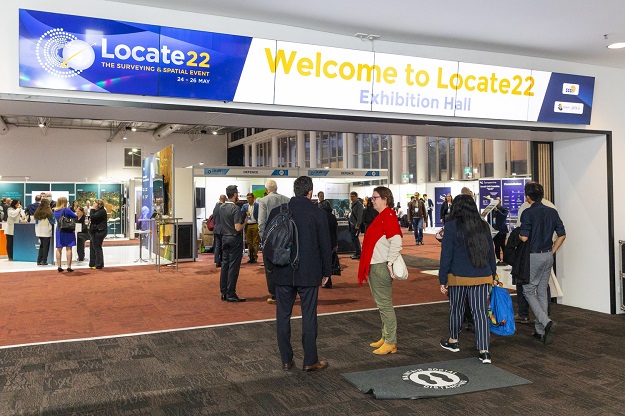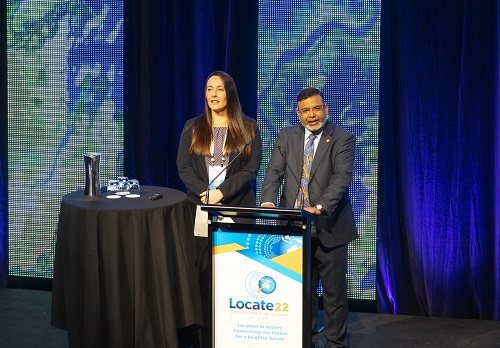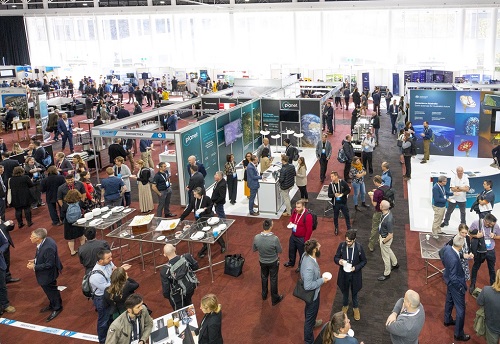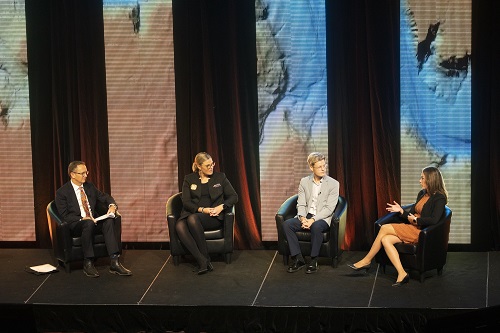
Images courtesy Locate22
Some first impressions from a first-time attendee at the annual Locate conference.
Itook over the role as editor of Position magazine and SpatialSource.com.au in March last year, right in the middle of the pandemic and its concomitant lockdowns. The disruption COVID caused to travel and to events such as conferences, meant that I was essentially unable to go out and meet people in the industry and introduce myself. A very unusual situation to say the least.
So it was with great anticipation that I made my way to Canberra in late May to attend the Locate22 conference. This was to be the first time that most industry members had had a chance to meet face to face since the pandemic began, so I was eager to get involved and meet as many people as I could.
And Locate didn’t disappoint. What a marvellous event it was. There was a buzz in the air, as delegates old and new got together and renewed friendships or made new ones. It was clear from the many conversations I had, that everyone had been bursting to socialise once again after such a long period of isolation. And for me, it was a chance to meet many of the people with whom I had until then only been able to correspond via email, or over the phone.
I have to say that, as a newcomer to this industry, from first observations it is clear that the surveying and spatial field is filled with genuine, likeable, friendly people. Maybe one of the reasons for that is, as someone remarked during the course of the event, this industry is neither too big nor too small — it is just the right size for retaining a sense of authentic camaraderie.
But the size of the industry and its workforce was one of the main topics of many discussions and presentations. As everyone is aware, workforce woes — that is, the dearth of trained professionals coming into the sector — are critical at the moment. The problem ranges from a shrinking education system, to attracting talent in the first place, and to retaining that talent once it is in the industry. There’s a lot that needs to be done to solve this issue, which is why it was great to see the recent release of the report, The Australian Surveying and Spatial Workforce – A National Roadmap, prepared for The Surveyors’ Trust by Danica Bakalich.



Improving diversity is one important element in bolstering the workforce, not just for increasing the total number of industry participants, but also for all the other tangible and intangible benefits it can bring. I have to say that one thing that really struck me about the APSEA awards ceremony held on the second night of the conference, was the number of women who were nominated for awards, and especially the number who received awards. I know there is a still a very long way to go in improving female representation in surveying and spatial, but if the number of female APSEA awardees can be used as a guide, then trust me — this industry is streets ahead of others in which I have worked.
The need to attract more young people into the profession is another thing that stands out. Many of the young professionals present at Locate called for more support and opportunities from both the public and the private sectors, in terms of offering internships and other experience-building opportunities. More mentors are needed from within the Australian surveying and spatial community, so please contact SSSI (which is running a mentorship program) if you think you can help.
There were many other important themes covered at Locate22, one of which was data. Data, data, data was the message from many of the speakers — the growth of data, the ways in which it is being used and how it should be put to use in the future. There is an urgent need for more data specialists, especially those with knowledge of AI and ML.
Melissa Harris noted “unprecedented” government support across many aspects of the industry, including lots of money going into space, digital twins and digital cadastre. She also mentioned some impressive statistics, such as 500 million downloads of Victorian government data to date. She also made the point that everyone needs to get with the GDA2020.
In summary, I thoroughly enjoyed my time at Locate. It was filled with informative and thought-provoking presentations, enjoyable and friendly meet-ups and social occasions, a buzzing exhibition space, and lots of people passionate about this industry and the vital role it plays in our society. I’m already looking forward to attending next year’s event, and I hope to see you there too.
Stay up to date by getting stories like this delivered to your inbox.
Sign up to receive our free weekly Spatial Source newsletter.







